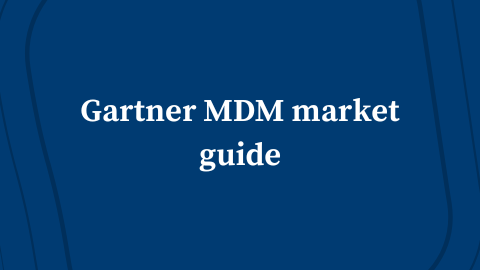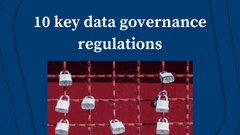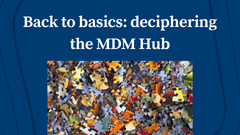Have you ever felt that your organization could make better decisions with better data?
If so, you’re far from alone. Managing data has become a mission-critical issue, with 84% of businesses stating they have faced more demand for data insights since the global pandemic. A common problem is that disciplines such as data quality and data governance are often in their infancy within the organization, which can lead to costly misunderstandings.
Master Data Management (MDM) is a discipline that seeks to improve data quality by creating a single “master” set of identifiers to describe the core entities associated with a business in a uniform way. For example, your customers can be considered a core area of master data, yet their associated information may be recorded differently by each department in your organization. In the real world, they’re one person or entity.
Getting started with Master Data Management doesn’t have to be overly complicated. In this blog, we’ll outline the steps involved with building an MDM solution for your organization.
The importance of Master Data Management (MDM)
Let’s get started by acknowledging that MDM is a young discipline, and as such, you may be rightly confused by the varying definitions that are out there. The main takeaway is that MDM must be designed to work for your organization. A great place to start is with the real data management problems that may hurt your people in their day-to-day jobs.
At its core, MDM seeks to provide a single source of truth for data in the organization, reduce data redundancy, and improve overall data quality. This last point alone is a big deal – estimates show that poor data quality may impact the US GDP to the tune of $3 trillion.
Key components of a successful MDM strategy
First, it’s important to be clear about what your master data consists of. A helpful way to look at it is to know the difference between master data and reference data. Master data can be used to categorize standard business objects: customers, employees, prospects, suppliers, products, parts, and so on.
Reference data is either used to categorize other data in the database or to relate it to information beyond the enterprise. External data is a good example of reference data, such as geography or industry data.
Steps to get started with MDM implementation
Here are a few steps to get started with Master Data Management implementation:
-
- Get organizational buy-in for MDM. You’re going to need stakeholders who are prepared to stay the course. The easiest way to do this is to be clear about critical business priorities and how MDM will benefit them. Which business performance metrics will be supported?
-
- Define the business objectives for MDM. Know what needs to be done, the sequence it needs to be done in, and the resources required to meet your business objectives.
-
- Assemble a cross-functional team. MDM initiatives depend heavily on effective collaboration. It interacts with people, teams, and divisions, so you’ll need a cross-section of business owners, data stewards, and software architects.
-
- Create an MDM roadmap. Some typical steps to creating a roadmap include: assessing the current state of readiness, defining your desired state, conducting a gap analysis, prioritizing strategies for each gap, and tying together in a roadmap.
Best practices for MDM implementation
Assess organizational readiness
Take a “right-sized” approach
Select the right MDM tools
Establish clear data governance policies
MDM in the real world
Sometimes data management can seem highly theoretical as a topic, so it’s important to look at examples of MDM in action. Here are some helpful case studies:
· National Student Clearing House
· World Leader in Aeronautical Equipment
Is your organization ready to start its MDM journey? Start by assessing your current data management practices and considering the steps we’ve outlined here. You can find detailed information on xDM, our Master Data Management software, here to help you set your organization up for MDM success.
Would you like a custom demo of how Semarchy’s Unified Data Platform can revolutionize your data management practices? Click here to book a demo now!
Share this post
Featured Post
No featured post selected.












































